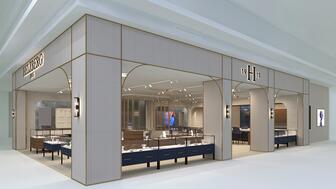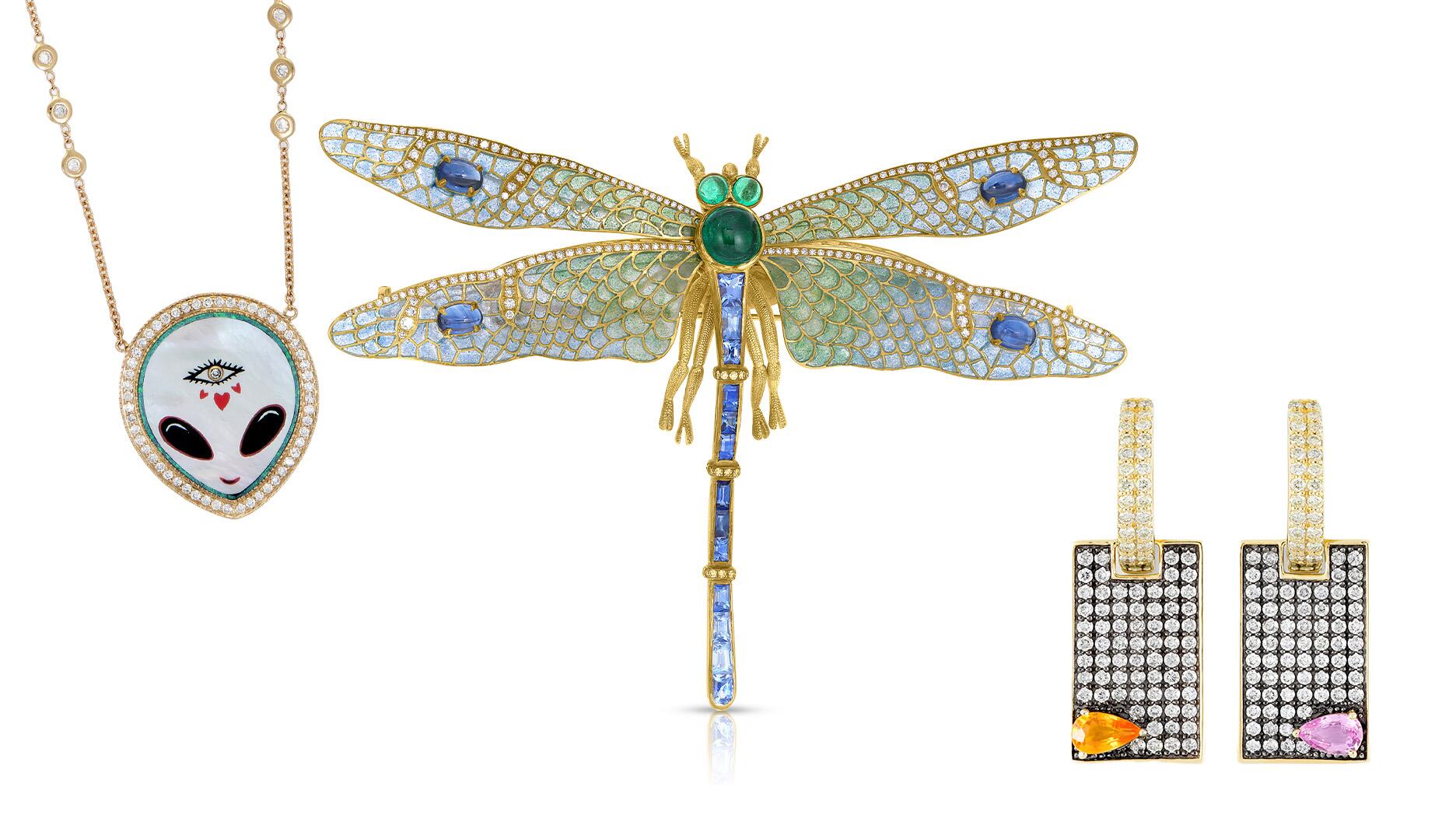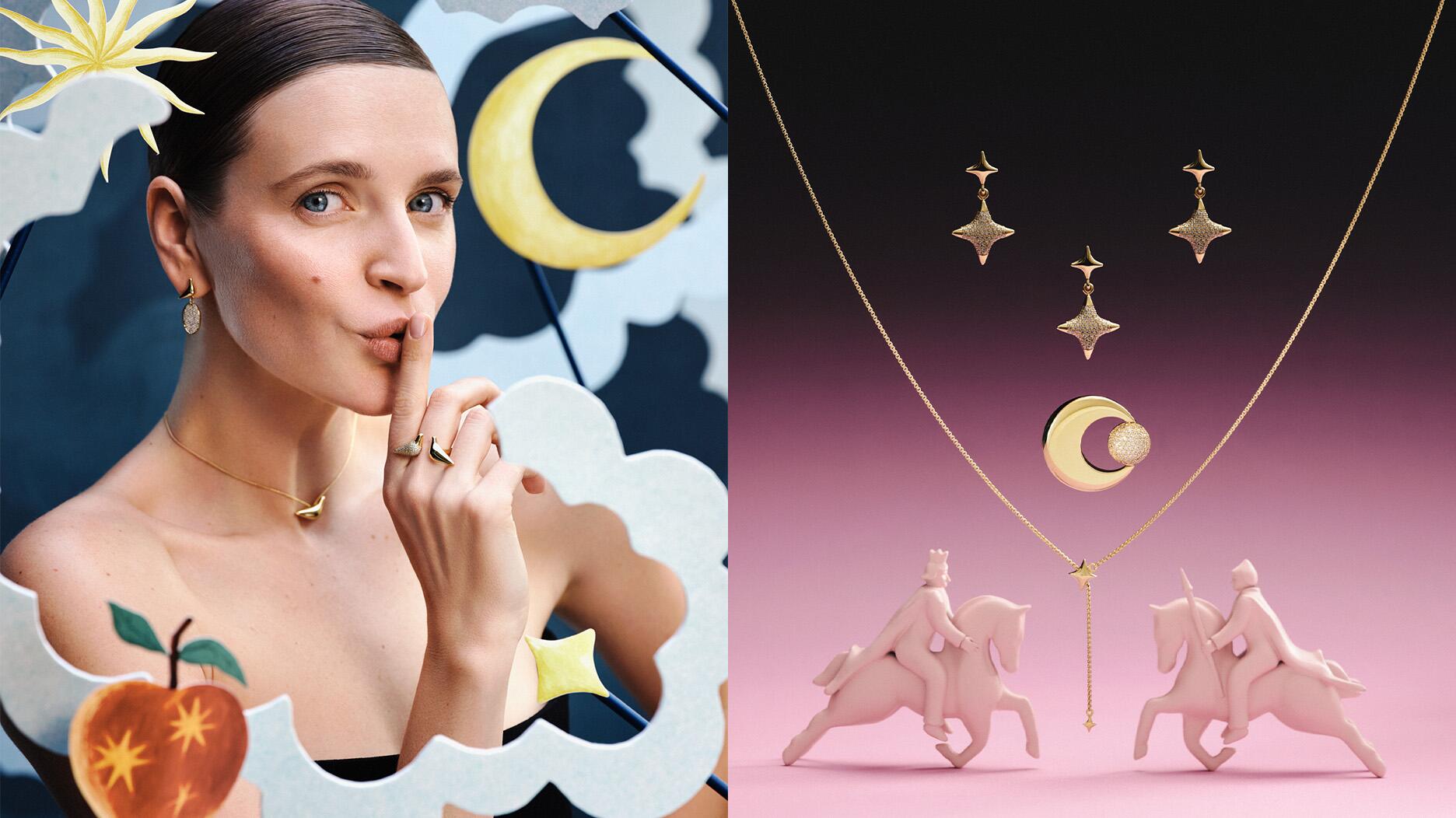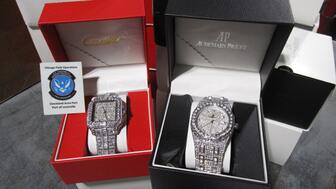In the recent multi-shipment seizure, CBP also found counterfeit Audemars Piguet, Moncler, and Chrome Hearts items.
The History Behind … Art Deco
The latest in National Jeweler’s The History Behind series explores one of the most popular and influential periods in jewelry design, the Art Deco era.
New York--It’s a period that’s so popular, and has enjoyed so many revivals, that the term Art Deco is used loosely to refer to jewelry, architecture and furniture from many different decades.

For this installment of The History Behind, National Jeweler turned to two antique experts--Janet Levy, of antique jewelry company The DeYoung Collection, and Patricia Faber of the Aaron Faber Gallery--to learn more about the origins of the era’s clean aesthetic.
When did Art Deco jewelry first appear on the market? Both Levy and Faber agree that there are no firm dates for any period of jewelry design; one movement simply blends into the one that follows.
“There’s not this kind of wall that divides anything,” Levy said. “It’s very fluid.”
While a touring exhibition put together by the Victoria & Albert Museum in London defines the period as 1910 to 1939, Levy said in her mind, the earliest Art Deco pieces date from about 1918 or 1919, with interest in the movement waning in the 1940s.
Why it is called Art Deco and what influenced the design of the period? Art Deco took its name from the Exposition Internationale des Arts Décoratifs et Industriels Modernes (the International Exposition of Modern Decorative and Industrial Arts). It took place in Paris in 1925 and is said to have done more to advance the worldwide popularity of Art Deco design than any other exposition of its time.
Like most movements in design, Art Deco was a rejection of the soft, curvy forms of the period that preceded it, Art Nouveau.
It was after World War I, and “People needed an escapist, happy expression coming out of that horrible war,” Levy said.
Women enjoyed a period of liberation in terms of their hairstyles, lifestyles and clothing--think how little the flapper girls of the era wore--and wanted new, fresh-looking jewelry to go with it.
They could have it, thanks to the growing use of machines, which could produce jewelry with clean lines, and produce it in greater amounts than was possible in the past.
Art Deco also was
How would you describe the aesthetics of Art Deco jewelry? Art Deco is, as Faber so perfectly described it, graphic, linear and geometric. To see these traits on a large scale, one merely has to look at some of New York City’s most iconic buildings, the Chrysler and Rockefeller Center.
Levy noted that there are two forces at play in any Art Deco piece. There’s the very strong, geometric structure and then the expression taking place within that structure.
Think: the floral or pyramid-like patterns visible in the beautiful, clean diamond and colored gemstone-set bracelets, brooches and earrings from houses such as Boucheron, Van Cleef & Arpels and Cartier and, in the United States, Raymond Yard.
Art Deco also was the era that Cartier’s artisans came up with the Tutti Frutti design, which featured diamond and carved, colored gemstones, influenced by the Mughal period in India.
What materials were popular? Platinum was the most widely used metal of the era.
Gemstone-wise, it was diamonds and colored stones, particularly the big three: sapphires, emeralds and rubies. Levy said there also were a lot of fancy cuts used during the period, including fancy cuts in color.
Is Art Deco the most influential period in jewelry design? Both Levy and Faber said yes.
“Etruscan and Scythian jewelry shows up most often throughout (history) but I think Art Deco in the modern era is strongest, and I think it’s the most popular,” Faber said.
It’s enjoyed a number of revivals throughout history, including in the late 1980s and early ‘90s, and influences the geometric designs that are en vogue today.
The clean lines continue to appeal.
“You never get tired of it,” Faber said. “I never get tired of looking at the Chrysler Building and jewelry has a lot of the same visual appeal. There’s always something new to see in the design.”
How can retailers add authentic Art Deco pieces to their estate jewelry inventory? Levy said jewelers need to be pro-active in order to snag pieces from this still-popular era.
She recommended attending estate jewelry shows--one example is Lueur, which is coming up at end of October in New York--as well as visiting reputable dealers to look at jewelry, analyze its quality and compare prices.
Price points for Art Deco jewelry start as low as $2,000 for a simple bar pin and can climb to $10,000 to $20,000 for bracelets that aren’t signed, which Levy considers a good deal. More elaborate signed pieces, meanwhile, can sell for upwards of $1 million at auction.
Faber also recommended the auction houses as good sources for retailers, as they edit their offerings carefully. “You’d be less likely to find authentic Art Deco privately,” she said.
The Latest

Helzberg’s Chief Retail Officer Mitch Maggart shared details about its tests of a new store concept rooted in an elevated luxury experience.

Jewelers of America execs and National Jeweler editors discuss tariffs, the sky-high gold price, and the engagement that broke the internet.

How Jewelers of America’s 20 Under 40 are leading to ensure a brighter future for the jewelry industry.

The luxury goods company said founder Ippolita Rostagno will remain at the brand’s helm.


Laura Burdese, who joined the Italian luxury brand in 2022, will take on the role in July.

The National Jeweler editors revisit the most noteworthy industry happenings and design trends from 2025.

Roseco’s 704-page catalog showcases new lab-grown diamonds, findings, tools & more—available in print or interactive digital editions.

Need a gift for the cat lover who has everything? Look no further than our latest Piece of the Week.

It purchased the “Grosse Pièce,” an ultra-complicated Audemars Piguet pocket watch from the ‘20s, for a record-breaking price at Sotheby’s.

The lab-grown diamond grower now offers custom engagement and fashion jewelry through its Kira Custom Lab Jewelry service.

Chandler got his start at Michelson Jewelers and has served as DCA president and CEO since 2001. He will retire at the end of the month.

The boutique is slated to open this week inside Terminal 8, offering pre-owned Rolex watches and more to international travelers.

Sponsored by Digital Monitoring Products

The special-edition egg pendant ingested in a New Zealand jewelry store was recovered after a six-day wait.

Associate Editor Natalie Francisco plays favorites with Piece of the Week, selecting a standout piece of jewelry from each month of 2025.

The “Love and Desire” campaign is inspired by the magic that follows when one’s heart leads the way, said the brand.

Two awardees will receive free tuition for an educational course at the Swiss lab, with flights and lodging included.

Berta de Pablos-Barbier will replace Alexander Lacik at the start of January, two months earlier than expected.

Sotheby’s held its first two jewelry sales at the Breuer building last week, and they totaled nearly $44 million.

Winners will receive free registration and lodging for its fourth annual event in Detroit.

Here are six ideas for making more engaging content for Instagram Reels and TikTok, courtesy of Duvall O’Steen and Jen Cullen Williams.

The honorees include a notable jewelry brand, an industry veteran, and an independent retailer.

Carlos Jose Hernandez and Joshua Zuazo were sentenced to life without the possibility of parole in the 2024 murder of Hussein “Sam” Murray.

Yood will serve alongside Eduard Stefanescu, the sustainability manager for C.Hafner, a precious metals refiner in Germany.

The New Orleans jeweler is also hosting pop-up jewelry boutiques in New York City and Dallas.

Set in a Tiffany & Co. necklace, it sold for $4.2 million, the highest price and price per carat paid for a Paraíba tourmaline at auction.

























